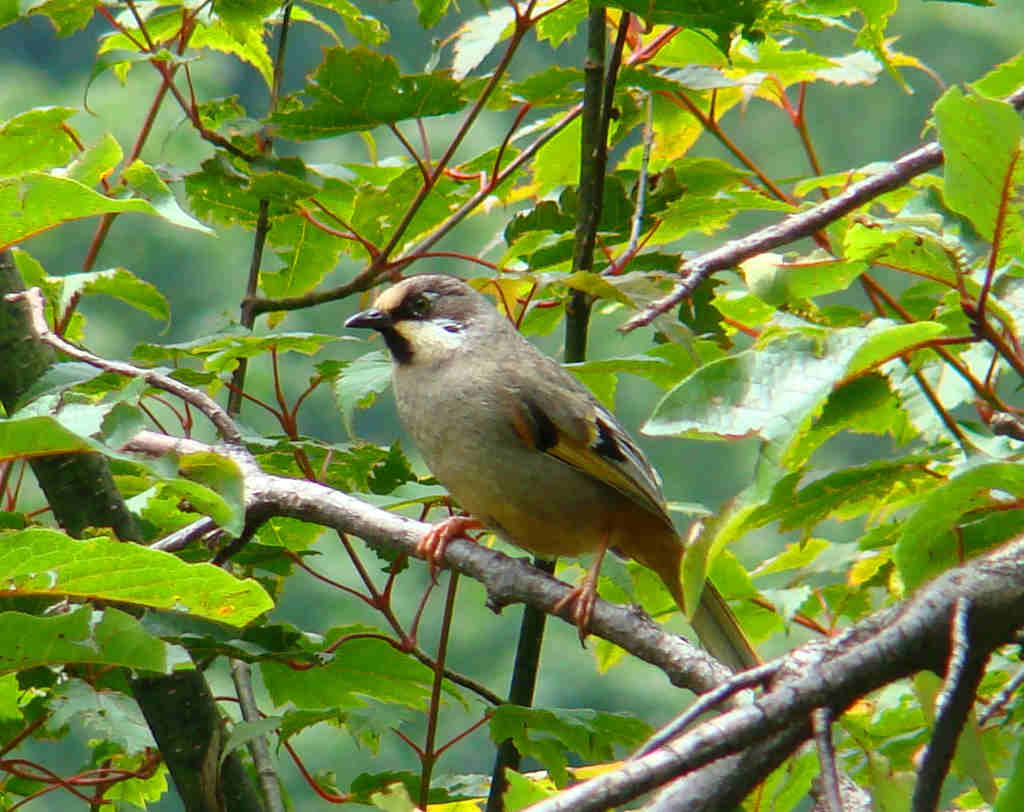
Garrulax variegates (Variegated laughingthrush)
The Garrulax variegatus, commonly known as the Variegated Laughingthrush, is a charming and vocal bird species found in the forests and undergrowth of the Great Himalayan National Park (GHNP). Known for its lively social behavior and melodious, laughing call, this bird adds both color and sound to the park’s rich biodiversity. Observing the Variegated Laughingthrush in GHNP is a rewarding experience for birdwatchers and nature enthusiasts.
Physical Description and Behavior
The Variegated Laughingthrush is medium-sized, with a strong body and a soft plumage marked with subtle shades of grey, olive, and chestnut, depending on the subspecies. Its head may appear slightly crested, and its eyes are ringed with pale feathers, giving it an expressive look.
These birds are extremely social and often move in groups, sometimes mixed with other laughingthrushes or babblers. They forage on the ground and in low shrubs, feeding primarily on insects, seeds, berries, and small invertebrates. Their constant chattering and musical calls are a common soundscape in GHNP’s dense foliage.
Habitat in GHNP
In the Great Himalayan National Park, the Variegated Laughingthrush prefers subtropical or montane forests at altitudes ranging from 1,800 to 3,000 meters. They are commonly seen in the Tirthan and Sainj valleys, especially during early mornings when bird activity is at its peak.
These birds are particularly dependent on dense undergrowth for nesting and cover, making GHNP’s protected forests an ideal habitat.
| Common name | Variegated Laughingthrush |
| Scientific name | Garrulax variegates |
| Family | Garrulacinae |
| Description | It has grey or olive, with black patches on greyish wings, rufous- buff forehead and malar stripe, and black throat. Resident. Breeds (1700-3355m) and winter migrant (1200-2100m) |
Breeding and Nesting
During the breeding season, which typically spans spring and early summer, the Variegated Laughingthrush constructs cup-shaped nests in shrubs or low trees. The female lays about 2–4 eggs, and both parents share incubation duties and feeding responsibilities for the chicks. The dense vegetation of GHNP offers ample nesting sites and food availability.
Conservation and Ecological Role
The Variegated Laughingthrush is currently classified as a species of Least Concern by the IUCN, but its presence is a valuable indicator of healthy forest ecosystems. GHNP’s strict conservation regulations, minimal human interference, and protection of native flora ensure a secure environment for this and other native bird species.
By feeding on insects and spreading seeds, laughingthrushes play a crucial role in forest regeneration and maintaining ecological balance in the park.
Conclusion
The Garrulax variegatus (Variegated Laughingthrush) is not only a visual delight but also an acoustic presence in the Great Himalayan National Park. Its sociable nature and vibrant call make it a standout species for bird lovers. Protecting its habitat ensures the continuation of the melodious charm that these birds bring to the hills and valleys of GHNP.



